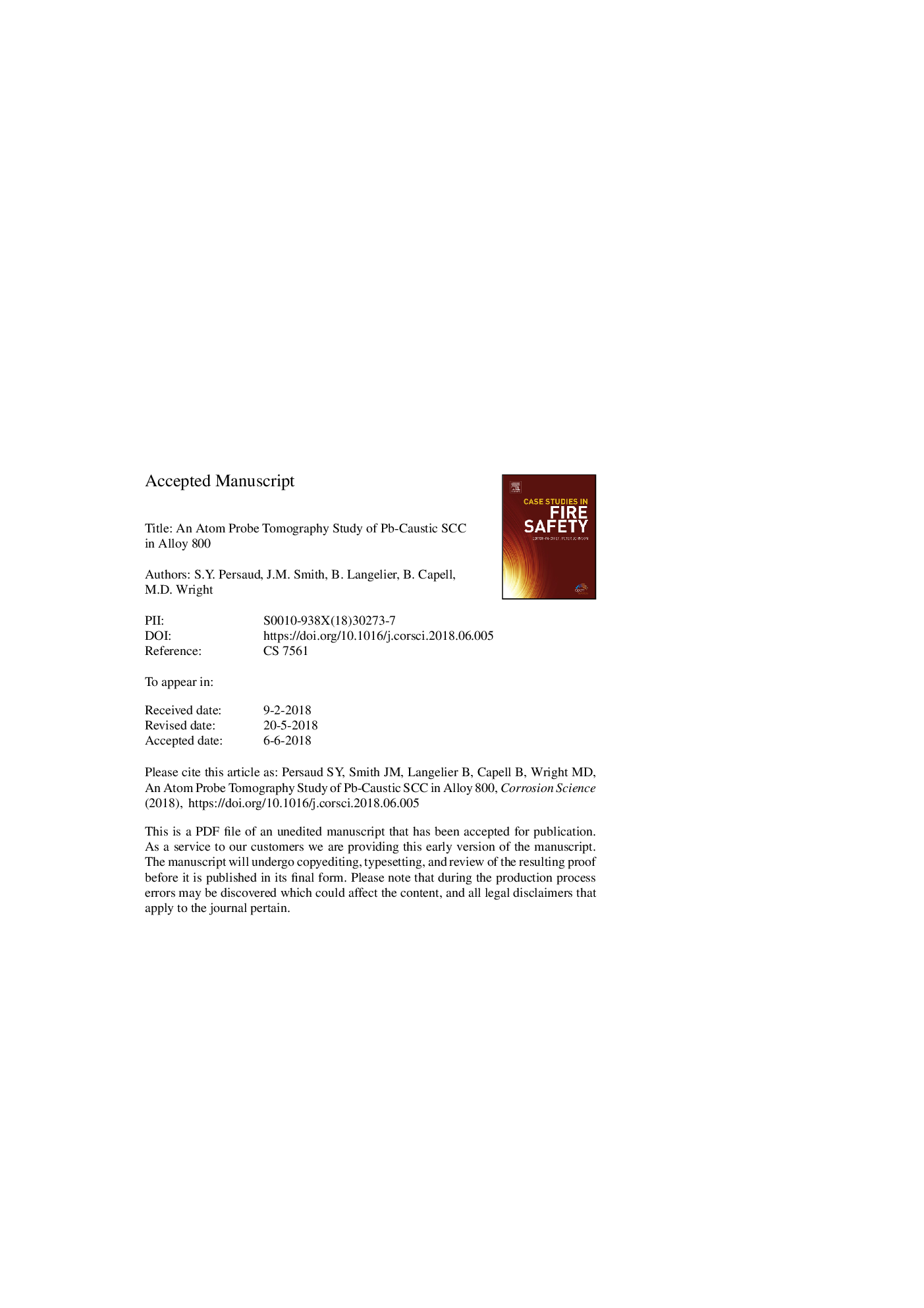| Article ID | Journal | Published Year | Pages | File Type |
|---|---|---|---|---|
| 7893217 | Corrosion Science | 2018 | 30 Pages |
Abstract
Stress corrosion cracking (SCC) of Alloy 800 was induced in 330â¯Â°C Pb-caustic solution (pH330°C 9.5). These laboratory tests simulated extreme crevice environments in nuclear plants, but do not occur under normal operating conditions. Atom probe tomography (APT) was used to examine crack tips, a powerful but scarcely used technique for this application. APT revealed sub-nanometre scale crack chemistry: successive Ni-rich, de-alloyed regions and segregated Fe- and Cr-rich oxides. Also, APT allowed for quantification of impurities, such as Pb which segregated to oxide-metal interfaces (<4 at.%). Discussion highlights new mechanistic insights from APT, complementing prior transmission electron microscopy (TEM) analysis.
Related Topics
Physical Sciences and Engineering
Materials Science
Ceramics and Composites
Authors
S.Y. Persaud, J.M. Smith, B. Langelier, B. Capell, M.D. Wright,
